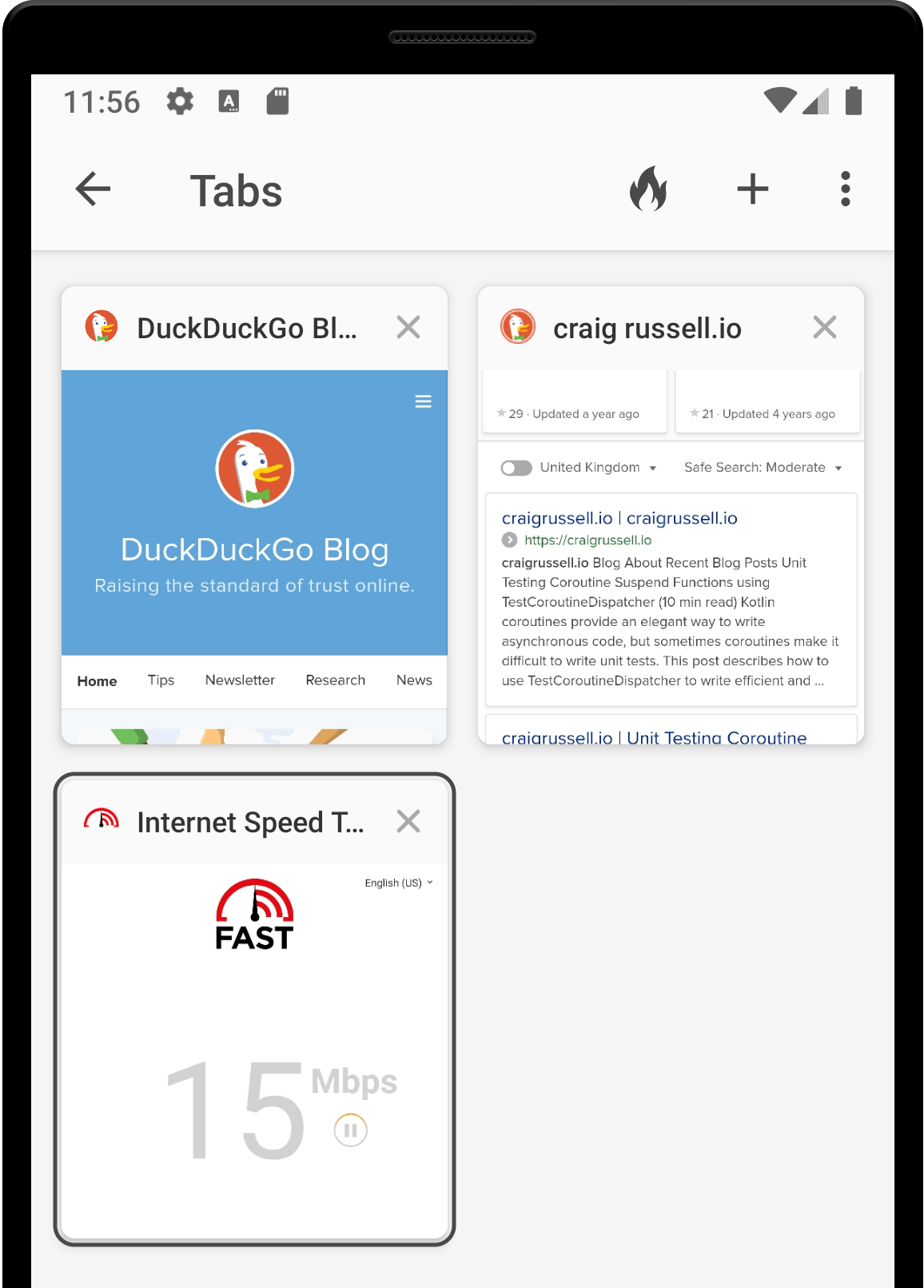craigrussell
Technical blog from Craig Russell.
This post describes a pattern of launching coroutines which cancel when the Activity or ViewModel is destroyed, but support allowing important parts of the coroutine to run uncancelled.
Overview
When you have an Activity and a ViewModel, you need to pay attention to the scopes in which you launch coroutines. Launching a coroutine from an Activity will result in it having a different lifecycle than if launched from ViewModel. And what happens if you have async work that you don’t want to cancel if the Activity or ViewModel are destroyed?

Existing architecture
In our codebase, we typically marked our ViewModel functions with suspend when they would involve asynchronous work, and launched the coroutine from the Activity. Part of the rationale for this was that it made testing much easier. We knew how to write a test for a suspend function.
Let’s consider this example; we have the TabSwitcherActivity which is used to show users their open tabs and let them switch, add, and close tabs.

For brevity, let’s just focus on the close tab functionality.
class TabSwitcherActivity : CoroutineScope by MainScope() {
fun onTabDeleted(tab: TabEntity) {
launch { viewModel.onTabDeleted(tab) }
}
}
class TabSwitcherViewModel {
suspend fun onTabDeleted(tab: TabEntity) {
tabRepository.delete(tab)
}
}
class TabRepository {
suspend fun delete(tab: TabEntity) {
deleteOldPreviewImages(tab.tabId)
tabsDao.deleteTabAndUpdateSelection(tab)
}
}
Key points to note
- User chooses to delete a tab from the
Activity Activitylaunches a coroutine, and calls delete method onViewModelViewModelcalls delete method onTabRepositoryTabRepositorydeletes the tab from the database
Lifecycle problems
There is a problem looming here. The reason we are using coroutines at all in this flow is because deleting from the database is an asynchronous operation; it might not happen immediately since it involves disk IO.
What happens if the user navigates away from the Activity immediately after hitting the delete button but before the tab is deleted? Consider this sequence 👇
If the Activity is destroyed, the coroutine will be cancelled and we might fail to honor the user’s decision to delete the tab. This is dangerous! ⚠️ If the user thinks the tab will be deleted, we can’t disregard that just because the user hit the back button or rotated their phone.
Solving the lifecyle problem
- We could choose to not cancel the coroutine.
- This could cause leaks and crashes as code executes on an
Activitywhich is now destroyed. - This is bad ❌
- This could cause leaks and crashes as code executes on an
- We could choose to launch a coroutine from the
ViewModelinstead of theActivity.- This moves the coroutine to a longer-lived component, but we haven’t really solved the problem; merely kicked the can further down the road.
- If the user navigates back from the tab switcher
Activity, theActivity,ViewModeland coroutine will all be destroyed and cancelled and we’ll still fail to honor the user’s action. - This is bad ❌
- We could use
GlobalScope.launchfrom theRepository.- This would ensure the deletion takes place
- However, we’ve now disregarded structured concurrency and won’t be able to tell when the operation has finished from the calling code. If we wanted to show a
Snackbarwhen the tab was deleted for instance, it would be trickier to achieve with this approach. - This is little better than creating a new
Threadand firing that off to do the deletion. ❌
- In the
Repository, we can useNonCancellableto ensure the deletion cannot be cancelled once started. ✅
Introducing - NonCancellable ✨
A non-cancelable job that is always active. It is designed for
withContextfunction to prevent cancellation of code blocks that need to be executed without cancellation.
Well now, that sounds pretty handy for our scenario. Let’s explore NonCancellable further, and see what the code looks like for our TabRepository. As it turns out, it requires just a tiny change to our TabRepository to get this new behavior.
suspend fun delete(tab: TabEntity) {
withContext(Dispatchers.IO + NonCancellable) {
deleteTabImagePreview(tab)
tabsDao.deleteTab(tab)
}
}
Summary
Within a coroutine, we can mark a block as NonCancellable to ensure it runs to completion once started.
- If the
Activitywhich launched the coroutine is still around, it’ll be able to take action to confirm deletion with the user (e.g., show aSnackbar) - If the
Activityis destroyed, the coroutine it launched should be cancelled too. However, withNonCancellable, we ensure that the tab will be deleted (as long as the app itself isn’t killed) - If the
Activityis already dead, nothing in the coroutine after the block marked withNonCancellablewill execute; the refusal to be stopped applies only to code within the block. - It’s all just as testable as before 😌
